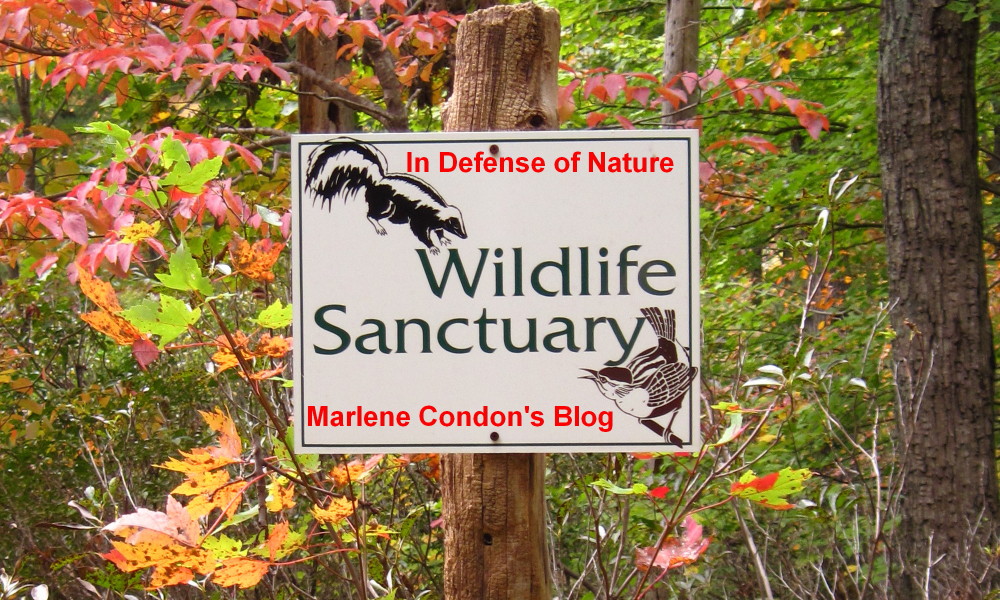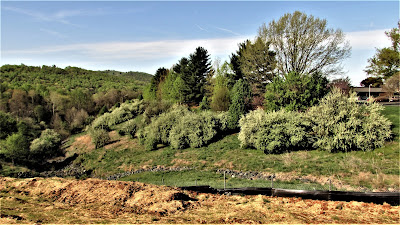Bradford
Pear—Nativists Making A Big Stink about Nothing
ALL TEXT AND PHOTOS © Marlene A. Condon
According
to the “fact” sheet (much of the information is inaccurate or misleading) of
the Blue Ridge Prism (“a volunteer-driven organization dedicated to reducing
the negative impact of invasive plants in the northern Blue Ridge Mountains of
Virginia”), the Bradford Pear (Pyrus calleryana) is “a scourge upon the
agricultural and natural world.”
https://blueridgeprism.org/wp-content/uploads/2021/09/Bradford-Pear-Factsheet-2021-9-9-v1-FINAL.pdf
The reason given in support of
this statement is that it “quickly spread[s] and replace[s] desirable plants in
invaded areas.” However, the proclamation that alien plants “replace” or “push
out” native plants is misleading.
For example, I regularly walk
along a section of nearby road where I’ve been watching the spread of Burning
Bush (Euonymus alatus) for the past 36 years.
.JPG) |
What I’ve observed with these
plants (and all the alien plants I’ve taken photos of over the course of
decades) is that they germinate in spots where there is nothing else
occupying that site. Indeed, physics tells us this must be the case as no
two physical objects can occupy the same space simultaneously.
Thus, so-called invasive plants
usually start life where there is an empty site for them to grow. The only way
they can spread is if there’s plenty of barren land for them to fill, as often happens
with Autumn Olive (Elaeagnus umbellata) growing in worn-out (devoid of
nitrogen from years of use) farm fields.
The only way any plant can “replace”
another plant is if its growth habit over the course of years provides it with some
advantage that other plants vying for the space don’t possess. But! The
erroneous assumption always made by nativists is that native-plant species were
growing in that field prior to the arrival of the Autumn Olive and they were
outcompeted, which simply isn’t true. Very few native plants can survive in poor
soil, and the ones that do—mainly Virginia Red-cedar (Juniperus virginiana),
Broomsedge (Andropogon virginicus), and Virginia Pine (Pinus
virginiana) where I live—often join Autumn Olive in such areas.
It’s a truism that anywhere you
see lots of nonnative plants growing, you can bet the soil has been disturbed
and is not conducive to the growth of native plants. If it were, indeed,
capable of supporting such “desirable” plants (a prejudiced judgement on the
part of the PRISM writer), you can trust there would be native plants
growing there.
So why are some people making such
a big stink about Bradford Pear trees? Well, according to nativists, these tree
blossoms do literally stink, and you shouldn’t plant them.
The PRISM “fact” sheet calls
them “malodorous” and “bad-smelling”, and suggests “the flowers give off a
stink reminiscent of unwashed gym socks.” Other writers suggest a much worse
odor. A Raleigh, North Carolina News & Observer newspaper writer
wrote, “Their stench has been compared to rotting fish, urine and other pungent
bodily fluids.”
https://www.newsobserver.com/news/local/article259195743.html#storylink=cpythem
Yet the dishonesty of all these
descriptions is easy to discern. Do you really think anyone would leave these
trees standing in their yards if they smelled as bad as suggested above? Of
course not. These trees can be viewed in an abundance of yards, and their size
tells you they’ve been growing there for numerous years. One can only conclude the
owners don’t have a problem with these early spring-blooming floriferous trees.
I can provide an especially
telling example to illustrate that people who suggest Bradford Pears stink are
either not familiar with them, or they are deliberately spreading
disinformation to try to keep people from buying/planting them.
I have taken the same road to
Charlottesville, Virginia, for the past 36 years. In 1994, a humongous house
was constructed on this road (5500 finished square feet comprises the house,
and 1600 of 3400 square feet are finished in the basement). The owners had dozens
of Bradford Pears planted; many went in along both sides of their long driveway
right to the house, and quite a few were planted along the road to either side
of their driveway.
These folks lived in their
house until 2013, and they never removed the Bradford Pear trees, which they
could have well afforded to do if they had to endure a stench every spring.
Even the people who moved in when the house was almost twenty years old have
kept the trees along both sides of the driveway for the past nine years. (They
did eventually replace the ones along the road that were broken when severe
winds [a possible tornado] went through the area.)
I can assure you that if these
trees provided a foul stench every spring, either of the two different owners
could have afforded to get all of them removed—after all, we are talking about people
who can afford to live in a house valued at three million dollars.
So, if you have Bradford Pear
trees on your property, should you get rid of them based upon the information
provided by the PRISM writer or the newspaper writer? Absolutely not.
Either out of dishonesty or
ignorance, the PRISM writer basically blames “starlings, an introduced species”
for spreading these “weed trees across the built and natural landscape”. But
several native species find survival assistance from the fruits of Bradford
Pears. Flocks of American Robins and Cedar Waxwings, both of which depend upon
fruits in winter, relish these fruits. Which is a better choice for the
environment—keeping trees that provide for wildlife or pesticiding these trees
and adding poison to our landscape?
Pay no heed to these folks who’ll say anything to manipulate you.
The push for folks to remove so-called invasive plants is misguided because it’s extremely destructive of functioning habitat. It also makes much use of pesticides, which can kill animals as well as plants, including microorganisms within the soil. Lastly, the folks pushing this agenda do not really know why they are against these alien plants, other than that they believe we need more native plants. But their arguments do not pass muster.
It’s much better for our world to allow wildlife to call the shots. If nativists observed these alien plants with open minds, they would clearly see that our wildlife makes abundant use of “invasive” species. Mature plants—even if alien—provide habitat while bare ground does not. Even if young native species are planted where “invasives” are removed, it will be years before the area yields habitat.
It's bad enough our wildlife is losing ground to buildings and pavement covering the ground, as well as people’s ideas of what a created landscape should look like (mainly lawn). We don’t need people crazily demanding the removal of alien plants when they don’t have valid reasons for doing so.




